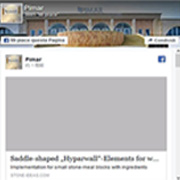QR code and barcode tags
QR code and barcode tags
Even if you have not seen or used RFID or NFC technology today, you most likely have seen QR codes or barcodes. If you have not, just take whatever groceries you have in your kitchen and examine the packaging. You should find at least a barcode, perhaps also a QR code.
Linear barcodes (e.g. an EAN code) are called 1D barcodes whereas the newer QR codes and data matrices are referred to as 2D barcodes. That is why I refer to both barcodes and QR codes with the term “barcode”.
During the past decades, the usage of barcodes has expanded to basically all industries. They are super cheap and easy to produce. That is why barcodes have been so widely adopted even for temporary use, such as in postal services or fast-moving consumer goods.
1D and 2D barcodes
Linear 1D barcodes are the familiar barcodes with parallel vertical lines. Similarly to other tags, they often contain only a short string of characters. This string usually refers to the asset’s identifier.
However, many barcode standards, such as the EAN, allows storing surprisingly large amount of data. For example, many invoices nowadays have barcodes. These codes can contain the information on the total sum, due date, account number, and the reference number.
Matrix codes, i.e., two-dimensional 2D codes (such as QR codes, data matrices, NexCode, Shotcode, PDF417) can include even more information than a linear barcode.
As the name suggests, 2D barcodes present the information in two dimensions. This allows storing more information in the code. Often, the QR code is used for directing users to a website or an application for more information.
From equipment management’s viewpoint, it is enough if the barcode only includes a short character string. A modern equipment management software identifies the individual items with this string and allows its users to access the item details in the system.
Barcode and QR code scanners
Barcode asset tags can be read with either a dedicated scanner or with a mobile phone. The cheapest scanners cost less than 20 euros and the most expensive ones several hundred euros.
If you utilize barcodes in asset tracking, you want to invest in a reliable and robust scanner. I know an incident where a cheap scanner almost burned down an entire warehouse after it overheated during usage.
You can read barcode asset tags with a smart phone as well. Most of the phone models already have a built-in barcode and QR code scanner, and many applications utilize the phone’s camera as a scanner.
However, scanner’s benefit compared to mobile phone is its speed. Scanners can read a lot of barcode tags fast, whereas the mobile phone requires you to re-open the scanner after each scan.
Especially in situations where you need to collect and scan large amount of equipment (such as a theatre production or tools for a construction site), a dedicated scanner is highly effective.
However, a smart phone works super-well with barcode asset tags in situations where you want to access the item information fast. By scanning the barcode asset tag with your mobile phone, you can access the item card in an equipment management application.
Advanced equipment management systems allow you to execute actions to the item as well. These can be, for example, reporting defects, logging maintenances, making an inventory, or booking the item to a reservation.
Barcode and QR code tags’ benefits
- Most cost-effective solution
- Easy to produce
- Can be scanned with a smart phone without dedicated scanners
Barcode and QR code tags’ shortcomings
- Scanner needs to have a visual connection with the code, asset tags cannot be hidden inside the equipment
- Must be scanned one-by-one, cannot be scanned simultaneously
Suitable use cases for barcode and QR code tags
- Due to their cheapness, you can tag assets that you have plenty of. Such as furniture, props, tools, IT equipment, AV equipment, presentation technology etc.
- Tagging equipment that is handled a lot. Barcodes do not have a long scan range but they are easy to scan when collecting equipment to a project, for example.
- Any question on barcode , please feel free to contact slon.



